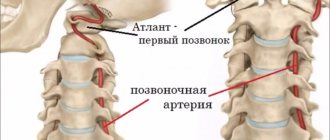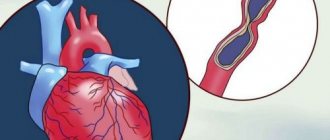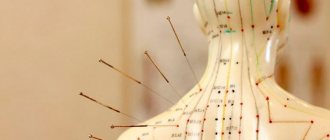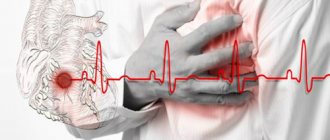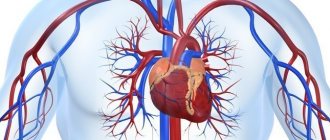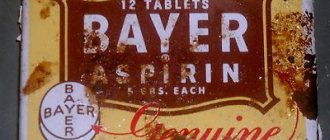Signs of angina
Regardless of the reasons, the manifestations of angina are always very clearly expressed - sharp pain in the chest, a feeling of squeezing of the ribs, the inability to breathe. Many people reflexively bring their hand clenched into a fist to their chest - as if copying the sensations and specifying the localization of the pain attack.
Sometimes the pain is more diffuse - in addition to the chest, there may be clearly defined pain in the left arm, under the left shoulder blade, in the epigastric region. This pattern of attack is more typical for women and is one of the reasons for incorrect diagnosis.
An attack of angina can be determined by:
- sudden pale skin;
- slower breathing;
- frequent uneven pulse;
- loss of sensitivity in fingers.
Most often, an attack develops during high physical exertion or severe emotional shock, and in a stable form of the disease it goes away on its own as soon as the load stops.
Why does angina occur?
Among the causes of angina pectoris, the first place is occupied by the narrowing of the lumen of the coronary arteries, caused by spasm of the vascular walls against the background of various pathologies. In 90% of cases, this pathology is atherosclerosis, sometimes in combination with thrombosis. A small percentage of cases occur due to functional disorders in the arterial endothelium.
The causes of coronary stenosis and atherosclerosis can be divided into three logical subgroups:
- Non-modifiable risk factors: hereditary atherosclerosis, male gender, age over 45 years.
- Physiological risk factors that are subject to partial correction: obesity, diabetes mellitus, hypertension, high levels of triglycerides in the blood plasma, reduced “good” cholesterol with increased “bad” cholesterol.
- Lifestyle, or factors that are subject to complete correction: physical inactivity, alcohol abuse, smoking, diet with a large amount of animal fats and bad cholesterol.
The more factors combine, the higher the risk of developing atherosclerosis and angina, as well as coronary heart disease.
Risk factors for developing angina
The following factors lead to narrowing of the coronary vessels and insufficient blood supply to the myocardium:
- atherosclerosis - deposition of cholesterol plaques in the walls of blood vessels;
- hypotension ー low blood pressure;
- coronary artery thrombosis;
- age-related changes in blood vessels.
In the vast majority of cases, angina is caused by atherosclerotic lesions of the coronary arteries. It develops due to disturbances in the metabolism of cholesterol and other lipids: excess animal fats in the diet, lack of plant foods. Therefore, proper nutrition is the basis for successful prevention of angina pectoris.
Nicotine also constricts blood vessels, so smokers develop angina more often.
The risk group for the development of angina pectoris includes:
- people over 55 years of age;
- men;
- smokers;
- people who abuse alcohol and drugs;
- people with pathologies of the cardiovascular system (heart defects, heart failure);
- with pathologies of the respiratory system (bronchial asthma, chronic obstructive diseases);
- overweight.
All these factors increase the risk of developing atherosclerosis, cardiac ischemia and angina. Most of them can be eliminated through lifestyle changes.
The relationship between angina and heart attack
From a technical point of view, both angina and myocardial infarction are essentially symptoms of coronary artery disease. The myocardium experiences hypoxia due to insufficient blood supply for three main reasons:
- coronary artery stenosis;
- atherosclerosis and thrombosis;
- increased need of myocardial tissue for oxygen during overload or high temperature during fever.
In general, any factor can lead to ischemia. contributing to the narrowing of the arteries - trauma, a strong blow, for astronauts and scuba divers - external pressure many times higher than atmospheric pressure, for athletes - a combination of increased oxygen consumption and high load.
In some cases, vasospasm with an additional decrease in pressure is facilitated by taking tranquilizers and narcotic drugs. There are cases where an ischemic infarction was caused by a combination of several individually safe drugs, which in combination form compounds that cause strong spasms.
Angina appears in chronic coronary heart disease, for example, in hypotensive patients or runners. Often, myocardial infarction is preceded by a prolonged attack of angina, which is not relieved by standard means - rest, taking nitroglycerin, breathing exercises to relieve spasm.
Statistically, 10% of patients with angina experience a myocardial infarction in the first year, and after rehabilitation, the frequency and duration of angina attacks increases - the disease progresses. At the same time, the presence of angina pectoris is not equal to a pre-infarction state, although it clearly indicates an increased risk of a fatal attack.
Causes of angina pectoris.
Angina pectoris does not occur out of nowhere; most often there is a situation due to which the heart muscle begins to experience a greater need for oxygen. These situations include:
- heart rhythm disturbance;
- high blood pressure, hypertensive crisis;
- heart defects;
- diabetes;
- obesity;
- smoking;
- frequent drinking of alcohol;
- hereditary predisposition.
Remember that an unhealthy lifestyle is as serious a reason for increasing the risk of angina as serious blood pressure and heart problems. Human health is a single system, and to preserve it it is necessary to take a responsible approach to all aspects of life.
Classification of angina
Doctors distinguish between two forms of angina - stable and unstable, and both options have an additional internal classification according to functional classes.
Stable angina
A clinical syndrome that occurs in response to physical and mental stress, accompanied by chest pain radiating to the back and left arm, is called stable angina. The main characteristic of the condition is the absence of necrosis of cardiomyocytes as a result of hypoxia, although the very fact of circulatory disorders in the myocardium is recorded. There are four functional classes of stable angina - progressive. the disease gradually increases the class.
- The first class of stable angina is accompanied by pain in the heart after intense physical training or severe stress.
- The second functional class causes the same pain symptoms under relatively small loads - 5-6 hundred meters in frosty weather at a fast pace, walking up to the 2-3rd floor, overcoming a low gentle hill.
- In the third class of stable angina, the patient experiences pain after just a couple of tens of meters while walking; everyday activities such as changing clothes, cooking or light cleaning require taking several breaks. The third functional class significantly limits the patient's mobility. actually disabling him.
- An attack of angina pectoris of the fourth functional class can occur even at rest or sleep; the slightest activity leads to pain. In fact, the patient is tied to a bed or chair and can hardly perform basic actions.
Without timely treatment, stable angina leads to the slow and rather painful decline of a person with intact intellect and a relatively healthy body.
Unstable angina
Diagnosis of unstable angina requires significantly more data, since no connection between overload and pain is observed, and the disease may not manifest itself in any way during a marathon race, but may arise. for example, during sleep.
Most experts tend to consider unstable angina a transition period between stable angina of the first class and myocardial infarction, but this approach is not entirely correct, since the first attack can develop without any external preconditions.
Patients with an unstable form of pathology should be observed by a cardiologist. since the absence of obvious preconditions and triggers of the disease increases the risk of sudden myocardial infarction and death.
Unstable angina is classified according to different parameters:
Acuteness of occurrence
- Recent angina associated with exertion, severe and progressive forms. The patient notes that coronary artery disease has been worsening for less than two months.
- Subacute form, characterized by attacks both under tension and at rest. The anamnesis records attacks of anginal pain over the past month; more than 48 hours have passed since the pain symptom was recorded.
- Acute form - over the past 48 hours, the patient has suffered several attacks of angina pectoris at rest or sleep.
Development conditions
- Secondary unstable angina - develops against the background of anemia, arterial hypotension, hypertensive crisis.
- Primary unstable angina - develops in the absence of any factors that aggravate oxygen starvation of myocardial tissue.
- Early post-infarction - appears within two weeks after myocardial infarction. is a serious complication.
Drug therapy and reactions to it
- No special treatment was carried out, perhaps a one-time dose of any medications.
- Drug therapy is provided in accordance with the protocol.
- The patient receives drug therapy for all three groups of antianginal drugs, including intravenous nitroglycerin.
Diagnosis of angina pectoris
To accurately diagnose angina, a wide range of tests and examinations are used to not only establish the fact of the disease, but also determine the severity.
A number of stress tests are used in diagnostics:
- ECG at rest and during physical activity;
- daily ECG monitoring in a hospital setting and in everyday life;
- Echocardiography at rest;
- scintigraphy during physical activity or with pharmacological load;
- Echocardiography during physical activity or under pharmacological stress.
Stress tests are not used in unstable acute angina, as well as in functional degrees 3 and 4 of stable angina, since the test can provoke myocardial infarction.
Simultaneously with a detailed diagnosis of angina pectoris, the patient undergoes a detailed examination to identify the causes of coronary heart disease, as well as to identify hidden pathologies, complications and diseases affecting vascular health.
Treatment of angina
Complete healing of angina pectoris is impossible. however, even in the later stages there is a possibility of achieving partial or complete compensation, smoothing out the functioning of the cardiovascular system and restoring the patient’s normal quality of life.
Therapy helps:
- significantly reduce the risk of an angina attack turning into a myocardial infarction;
- reduce the frequency of angina attacks;
- eliminate such manifestations of the disease as sudden spasms of blood vessels, the development of an attack in response to a slight load, etc.
Treatment procedures can be divided into four parallel blocks:
- relief of symptoms;
- lifestyle changes;
- drug therapy to reduce the likelihood of an attack;
- surgical correction (indicated for thrombosis and acute stenosis of the coronary arteries).
Symptomatic treatment
Relieving the symptoms of an attack is an important task. For quick relief, drugs from the group of nitrates with a short duration of action are used, which expand the lumen of the coronary arteries and veins.
The introduction of nitroglycerin and derivatives can urgently improve blood supply to areas of the myocardium affected by ischemia and regulate coronary blood flow. Due to hemodynamic unloading of the myocardium, the cells' need for oxygen also decreases, which reduces pain.
Thus, the use of nitrates does not in any way improve the oxygen supply to the myocardium; the entire analgesic effect is associated with a decrease in the oxygen demand of cardiomycetes. That is why nitrates are not used for therapy; their use is limited to stopping the acute phase of the disease.
Drug treatment
The selection of drugs to reduce the risk of new attacks of angina is carried out individually. There are seven large groups of drugs with different effects, and prescribing drugs in different combinations provides the best effect for different situations.
- Antiplatelet drugs are a mandatory item in the prescriptions. or antithrombosis drugs based on acetylsalicylic acid, for example, Fazostabil, which reduces the formation of blood clots and improves the fibrinolytic properties of blood plasma.
- The second mandatory drug belongs to the group of hypolipidemics - drugs that prevent the formation of lipid atherosclerotic plaques.
- Beta blockers and LF channel inhibitors are prescribed to normalize heart rate, eliminate arrhythmia and extrasystoles during an attack.
- Calcium antagonists provide vasodilation by lowering the concentration of calcium ions in muscle tissue.
- Nitrates are prescribed for direct relief of an attack, and also as a vasodilator. There are three classes of nitrate drugs; in addition to short-term action to relieve symptoms, there are nitrates with prolonged and significant action.
If there is no response to nitrates, it is necessary to re-diagnose due to an erroneous diagnosis.
Surgery
Unfortunately, drug therapy and lifestyle changes are not always effective. In cases where, against the background of progressive angina, there is a direct threat to the life and health of the patient, the following come to the rescue:
- Coronary angioplasty and stenting. These types of intravascular interventions are an alternative to open surgery. They allow you to restore the vascular lumen effectively and painlessly. An endoprosthesis implanted into the heart artery, a coronary stent, acts as a kind of frame, keeping its walls from re-narrowing. Damaged heart vessels are dilated mechanically through a puncture or incision of several millimeters. More information about the stenting method can be found in the following publication.
- Coronary artery bypass surgery. This is an open surgical procedure performed under general anesthesia. During the operation, the patient’s healthy vessels are sutured bypassing the affected area of the artery, improving blood flow and eliminating the cause of angina. Coronary artery bypass grafting is performed when stenting and angioplasty are impossible for some reason. The operation can be performed as planned or urgently - in the treatment of acute coronary syndrome and in the early stages of the development of a heart attack.

